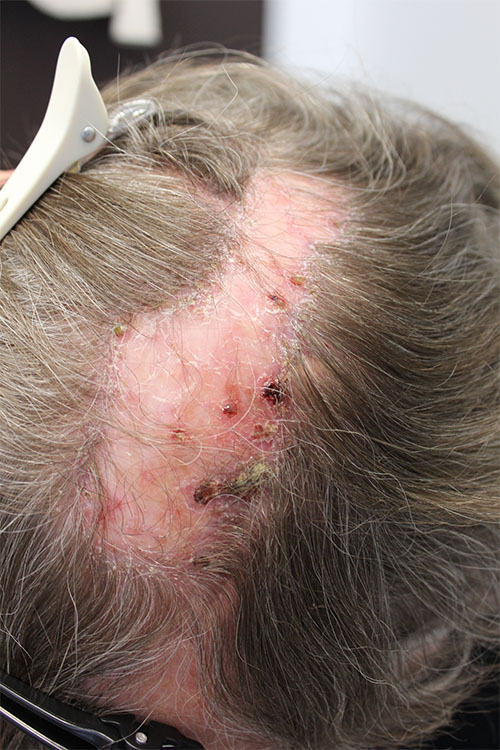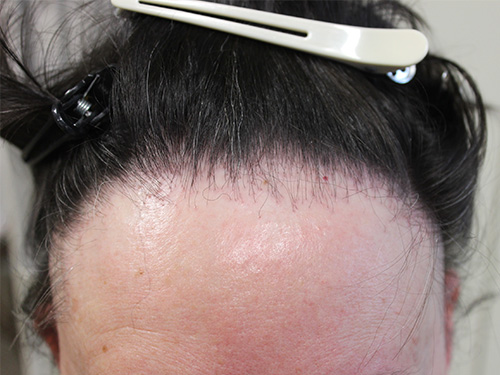Scarring alopecia
Some conditions that affect the scalp (eg chronic cutaneous [discoid] lupus erythematosus, lichen planopilaris, frontal fibrosing alopecia, folliculitis decalvans) cause scarring alopecia. Scarring alopecias are often the result of active scalp inflammation associated with the primary condition (eg perifollicular scaling, erythema, pustules, boggy swelling), and can lead to permanent scarring alopecia without early treatment. In some cases, eyebrows are partially lost.
See here for photos of scarring alopecia.


Prevention of permanent scarring alopecia relies on early treatment of the causal condition to reduce hair bulb inflammation. All forms of scarring alopecia are difficult to treat. Early referral to a dermatologist is essential for patients with suspected scarring alopecia, or who are at risk of scarring alopecia, because treatment is often futile after end-stage scarring. Scalp biopsies for scarring alopecia are not always required for diagnosis. If required, it is recommended that a scalp biopsy be performed by a dermatologist, because specific technicalities and knowledge are required for scalp biopsy sampling, and the clinicopathological correlation with scarring alopecias is complex.
While waiting for dermatology advice, prescribe a topical corticosteroid as for alopecia areata with limited hair loss of recent onset.
Specialist treatment includes intralesional corticosteroids, hydroxychloroquine, retinoids and immunosuppression.
